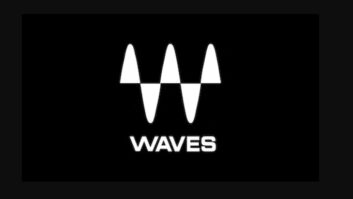This article originally appeared in TV Technology.
Earlier this year I reported “‘Twisted Waves’ Technology Demonstrated in Venice.” This technology, which uses orbital angular momentum to encode multiple signals on the same frequency, is being disputed by electrical engineers who claim the demonstration was really based on well known MIMO technology.
This week BBC News described the controversy in “‘Twisted Light’ Data-Boosting Idea Sparks Heated Debate” by science and technology reporter Jason Palmer. He provided this statement from Bob Nevels of Texas A&M University:
“This would be worth a Nobel prize, if they’re right. Can you imagine, if all communications could be done on one frequency? If they’ve got such a great thing, why isn’t everyone jumping up and down? Because we know it won’t work.”
Nevels is a former president of the IEEE Antennas and Propagation Society.
In a paper in the IEEE Transactions on Antennas and Propagation, Lund University’s Ove Edfors said what was going on in Venice was a version of MIMO — a technique first outlined in the 1970’s.
He told the BBC: “I’ve been trying to have a discussion with these guys, asking for arguments because all the arguments they have put forward have been perfectly explainable by standard theories. What I get back is ‘You don’t understand, you’re not a physicist,’ and I say, ‘Well, try to convince me.’”
Professor Bo Thide, the scientist from the Swedish Institute of Space Physics who conducted the Venice demonstration, responded:
“The typical wireless engineer, even if a professor, doesn’t know anything about angular momentum. The points made by these people … are in contradiction to each and every textbook there is in electrodynamics. This is not something invented by us, something we found out on a coffee break — this is on solid theoretical foundations going back through several Nobel prizes.”
For technical details on the debate, see the New Journal of Physics article comment on ‘Encoding many channels on the same frequency through radio vorticity: first experimental test’ by Michele Tamagnone, Christophe Craeye and Julien Perruisseau-Carrier.
“We show that the public experiment held in Venice by Tamburini, et al and reported in 2012 New J. Phys. 14 033001 can be regarded as a particular implementation of multiple-input–multiple-output (MIMO) communications and, therefore, has no advantages over established techniques. Moreover, we explain that the use of a ‘vortex’ mode (orbital angular momentum ` = 1) at one of the transmit antennas is not necessary to encode different channels since only different patterns — or similarly different pointing angles — of the transmit antennas are required.”
The article continued with an observation:
“Finally, we identify why this MIMO transmission allowed the decoding of two signals, despite being line-of-sight. This is due to the large separation between the receiving antennas, which places the transmit antennas in the near-field Fresnel region of the receiving ‘array.’ This severely limits the application of this technique in practice, since, for a fixed separation between receiving antennas, the detectable signal power from any additional vortex mode decays at least as 1/r^4.”
There is also a response, “Reply to Comment” on ‘Encoding many channels on the same frequency through radio vorticity: first experimental test’. F Tamburini, B. Thid´e, E. Mari, A. Sponselli, A. Bianchini and F. Romanato.
“Clearly, our experimental confirmation of a theoretical prediction, first made almost a century ago (Abraham 1914 Phys. Z. XV 914–8), that the total EM angular momentum (a pseudo-vector of dimension length × mass × velocity) can propagate over huge distances, is essentially different from — and conceptually incompatible with–the fact that there exist engineering techniques that can enhance the spectral capacity of EM linear momentum (an ordinary vector of dimension mass × velocity). Our OAM experiments (Tamburini et al 2012 New J. Phys. 14 033001; Tamburini et al 2011 Appl. Phys. Lett. 99 204102–3) confirm the availability of a new physical layer for real-world radio communications based on EM rotational degrees of freedom. The next step is to develop new protocols and techniques for high spectral density on this new physical layer. This includes MIMO-like and other, more efficient, techniques.”
If Bo Thide is right, the technology will go a long way to eliminating any concerns about a spectrum crisis, at least for fixed links. As I pointed out in my article earlier this year, from all the limited information available thus far, it appears that this would be very difficult to implement in portable/handheld devices.












